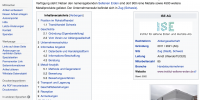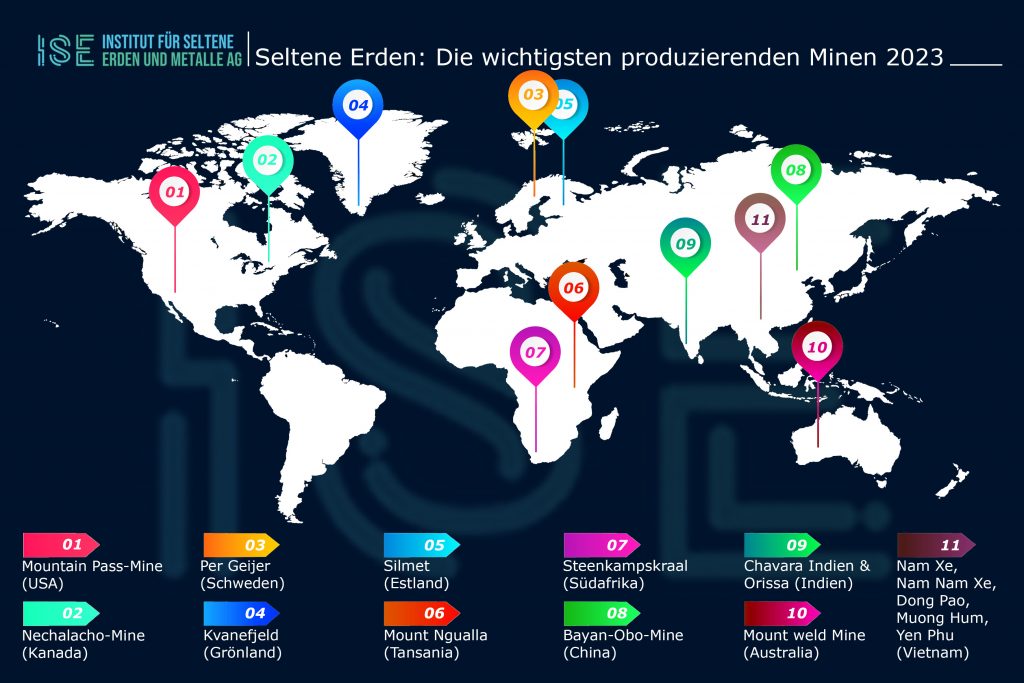Part 1
switch to part 2 switch to part 3
Investment Letter Special May 2012
Rare earths: The new star in the raw materials heaven. What consultants and their customers should know about
For a little over a year now, a new term has been part of the basic vocabulary of well-informed investors and investment advisors - “rare earths”, a (raw) material that has recently been used to create many investor dreams. But what are “rare earths”? Why is the topic suddenly so hot, why have the prices for these raw materials suddenly exploded?
This INVESTMENT LETTER gives a brief introduction to this complex and exciting topic, highlighting what investors should look for to participate in this market.
Until a few years ago, the topic "rare earths" (SE) was not found in any investment recommendation or in any popular economic title. A few may still remember the chemistry classes of bygone days, where the 17 elements on the period table were found under the group of "lanthanides".
1 Some important definitions
Rare earth: The name is misleading, as it implies that these are earths rarely found on our planet. In fact, these are not earths, but metals, which occur almost everywhere in the earth's crust. The term "earth" is the original term for oxides, the form in which all "rare earth metals" are bound in the earth's crust
are. The most commonly used abbreviation SEO stands for the term rare earth oxides, which actually occur everywhere on our earth (about 0,1 per thousand of the entire solid earth crust). They are "rare" primarily because of the fact that they are present in only a few places in the world in a concentration that allows for economic degradation. Geological institutes estimate the worldwide abundance of rare earths at 99 million tons.
Some of the rare earth metals (cerium, yttrium, and neodymium) are more abundant in the Earth's crust than, for example, lead, molybdenum or arsenic. Thulium, the rarest stable rare earth element, is still more abundant than gold or platinum. The term "rare earth metals" is justified in that larger deposits of suitable minerals are actually rare. The elements occur mostly only in small quantities, in many, widely scattered minerals and as admixtures in other minerals. Much of the industrial extraction of rare earth metals is therefore a by-product of the chemical treatment in the recovery of other, more concentrated metals from their ores.
Around 125.000 tons are extracted each year. China has an undiminished high share of the annual yield: 97 percent. But China only has 38 percent of the world's reserves. This situation means that China can determine prices as long as competing countries do not sufficiently expand their market shares - despite considerable rare earth deposits. China's competitors on the world market are in particular the USA with 13 million tons of reserves, Australia (5,4 million tons), India (three million tons) and the countries of the ex-Soviet Union, whose rare earth reserves are estimated at 19 million tons.
There are also high reserves in Canada, Greenland, South Africa, Turkey, Kazakhstan, Malawi and Vietnam, which recently agreed to a development cooperation with South Korea. As long as the quasi-world monopoly of the Chinese on the rare earth market is not "cracked", China can continue to set prices through export limits and artificial scarcity. In the top (2006), China has extracted 57.400 tons of rare earth from its mines. Since then, the annual yield has been reduced to 30.300 tonnes. In the battle for the "treasure chest" called rare earth, political prices dictated temporarily by the Chinese emerged. The tide will change as competition in the world market intensifies. Last but not least, one million tonnes of rare earths in Afghanistan are awaiting exploitation. However, the reserves are in the province of Helmand, which is still highly competitive.
Critical Technology Metals: To develop a good understanding of how the SE market works, it is important to be aware of the strategic importance of these 17 SE elements. The SEO belong to a group of exotic metals that are irreplaceable and therefore critical for the manufacture of many high-tech products. Their unique chemical and physical properties are fundamental prerequisites for the production of super magnets, computer chips, metal alloys and highly efficient optical systems. The scope of application covers the entire spectrum of our modern life. Key technologies are unthinkable without the use of rare earths. Products such as computers, smartphones, LCD screens, digital cameras, MRI scanners, fluorescent lamps, laser devices, X-ray technology, fuel cells, catalytic converters, soot particle filters, batteries for hybrid vehicles and laptops as well as the permanent magnets of wind turbines and electric motors can nowadays be used without the HIGH-TECH METALS no longer be manufactured. In short, the automotive, electrical and defense industries rely on rare earths.
Light and Heavy Rare Earths: The 17 SE elements are basically divided into two classes, namely Light Rare Earths (LSE) and Heavy Rare Earths (HSE). The difference lies primarily in the fact that the LSE occur in larger quantities and therefore the supply risk is smaller. As a result, they are more likely to suffer price collapses over the long term than HSEs, which are available in much smaller quantities worldwide. The consequence: rare earth projects with a high proportion of HSE have a clear long-term economic advantage over occurrences with LSE (Fig. 2). The rare earths needed in the industry on a large scale are light rare earths: europium currently at US $ 4.250,00 per kilogram, neodymium at US $ 255,00 per kilogram and praseodymium at US $ 225,00 per kilogram. For heavy rare earths, the industry requires the following elements: terbium at US $ 3.400 per kilogram, yttrium at US $ 110,00 per kilogram, dysprosium at US $ 2.025,00 per kilogram and gadolinium at US $ 225,00 per kilogram. All prices quoted refer to the corresponding oxides and are negotiable in February 2012. The only element of the rare earth group, which is traded on a stock exchange and thus has a daily updated price is neodymium, which was taken up at the stock exchange of Shanghai as raw material in the trade. The Institute of Rare Earths and Metals has already set up a workshop dedicated to creating a common industry standard for Europe on the quality of rare earths. Only when all rare earths of a genus have the same purity can they be made tradeable. This would have a great advantage for the industry, which would thus be able to secure future rare earth purchases in the stock market through futures contracts.

Fig. 2: Light and Heavy Rare Earths. SE elements that are short-term in the long run. Source: Institute of Rare Earths and Metals eV www.institut-seltene-erden.org







